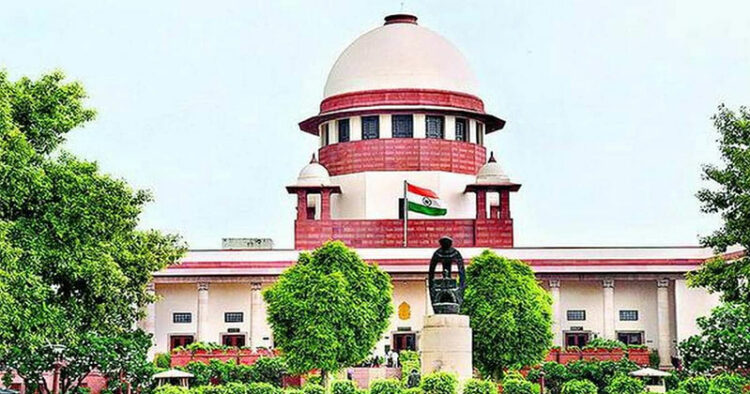A division bench of the Supreme Court heard a plea on January 20 (Brelithamarak & Anr. versus Union of India & Ors. and other connected matters) challenging a Presidential order revoking a 2008 notification that had delayed the process of delimitation for the States of Assam, Nagaland, Manipur, and Arunachal Pradesh quoting security issues. Observing that the pleadings had yet to be completed and the Union of India still needed to file a reply, the bench directed the matter to be heard in March. In the meantime, liberty was granted to file objections to the petitions. The bench was presided over by Justices Ravindra Bhat and Dipankar Datta.
On December 28, 2022, the Election Commission of India had begun delimiting Assembly and Parliamentary constituencies in Assam. The process was based on Census data from 2001. The Commission said a ban had been put in place, effective January 1, on creating new administrative units in the State until the exercise is completed. The measure to redraw Assam’s assembly and Parliamentary seats as per Section 8A of the Representation of the People Act, 1950, has been started following a request from the Union Law Ministry. The last delimitation of constituencies in Assam was done in 1976 based on the 1971 Census.
Senior Counsel Maneka Guruswamy told the bench that the delimitation exercise restarted by the Government in Assam is being carried out in the background of political disorder, with several districts being notified as disturbed and under the consequent extension of the Armed Forces (Special Powers) Act, 1958. She added that the drafting process of the final National Register of Citizens is still in progress, and nearly two million Assamese have claimed that they have been excluded from the register. She questioned if it was constitutional to start a delimitation process by issuing a press note. Additional Solicitor-General Sanjay Jain highlighted that unless the new exercise is finished, no cause of action will arise to attack it in a court of law.
Delimitation is the Act of redrawing boundaries of Lok Sabha and State Assembly seats to signify population changes. The critical aim of delimitation is to offer equal representation to equal segments of a population. Under Article 82, Parliament must enact a Delimitation Act after every Census. Once the Act was enforced, the Union Government established the Delimitation Commission. The Commission works by determining the number and boundaries of Constituencies so that the population of all seats, as far as feasible, is the same. The Commission also identifies seats reserved for Scheduled Castes and Scheduled Tribes. Following this, the Delimitation Commission’s draft proposals are published for public feedback.
The Commission also conducts public sittings. After hearing the public, it considers objections and recommendations and makes amends, if any, in the draft proposal. The final order is published in the Gazette of India and the State Gazette concerned and comes into force on a date specified by the President.
In the history of the Indian republic, Delimitation Commissions have been set up four times — 1952, 1963, 1973 and 2002 under the Acts of 1952, 1962, 1972 and 2002. There was no delimitation after the 1981, 1991 and 2001 Censuses. Yet, the 2002 Act did not make any alterations in total Lok Sabha seats or their distribution between various States. It also missed out on some States, including Assam, Arunachal Pradesh, Nagaland and Manipur, from the exercise, citing security risks. The Central Government reconstituted the Delimitation Commission for these four states and the union territory of Jammu and Kashmir on March 6, 2020.




















Comments